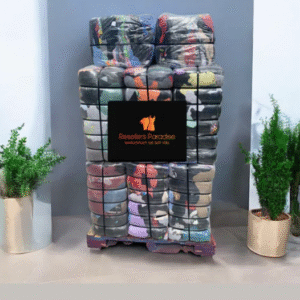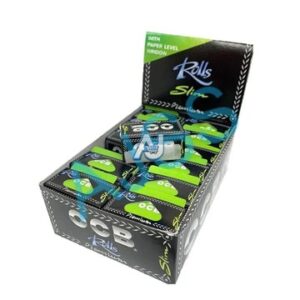Introduction to Honeycomb Pickleball Paddles
Pickleball has exploded in popularity, and with it, the technology behind paddles has advanced rapidly. One of the most talked-about designs is the honeycomb paddle. These paddles feature a core built like a beehive—strong, lightweight, and efficient. Whether you’re just picking up the sport or competing at a high level, understanding honeycomb pickleball paddles can help you make better choices and improve your game.
What Makes Honeycomb Design Unique?
The science behind honeycomb structure
The honeycomb design is based on nature’s perfect pattern. Just like a beehive, it provides maximum strength while keeping weight low. In pickleball, this translates to paddles that are easy to maneuver but still powerful.
Why players prefer honeycomb cores
Players love honeycomb paddles because they deliver a consistent feel with each shot. The structure spreads out impact, reducing vibration and offering more control. That’s why you’ll find honeycomb cores in most professional-grade paddles.
Types of Honeycomb Cores
Polymer honeycomb core
Polymer cores are the most popular. They’re soft, quiet, and provide excellent control—perfect for players who rely on touch and strategy.
Nomex honeycomb core
Nomex cores are harder and denser, giving players more power and a loud “pop” sound. They’re a great choice for aggressive players who like speed.
Aluminum honeycomb core
Aluminum offers a mix of control and durability. While not as common, it’s favored by players who want a solid feel and long-lasting performance.
Surface Materials Used in Honeycomb Paddles
Graphite surface
Graphite is thin but strong, giving players precision and control. Many top players prefer graphite honeycomb paddles for finesse shots.
Carbon fiber surface
Carbon fiber adds durability and a balance of power and spin. It’s considered a premium material, often found in high-end paddles.
Fiberglass surface
Fiberglass offers flexibility and generates more power. It’s excellent for players who want a bit of extra punch in their shots.
Weight Variations and Player Preferences
Lightweight paddles
Light paddles (6–7.5 oz) are quick and easy to handle, perfect for players who rely on fast reactions at the net.
Midweight paddles
Midweight paddles (7.6–8.4 oz) strike a balance between control and power, making them the most versatile choice.
Heavy paddles
Heavy paddles (8.5 oz and above) pack more power but may be harder to maneuver. They’re best for players with strong arms who like driving shots.
Spin and Control Benefits
How honeycomb paddles affect spin
The textured surfaces often paired with honeycomb cores help generate spin, giving players an edge in advanced play.
Control versus power balance
Honeycomb paddles are all about balance. Depending on the core and surface, you can fine-tune your game toward control or raw power.
Durability and Longevity of Honeycomb Paddles
A well-made honeycomb paddle can last years. Polymer cores hold up best over time, while Nomex may wear faster but deliver more punch in the short run.
Popular Brands Offering Honeycomb Pickleball Paddles
Selkirk
Known for innovation, Selkirk paddles often feature advanced honeycomb technology and premium surfaces.
Onix
Onix has built a reputation for powerful paddles, especially with their Nomex honeycomb cores.
Paddletek
Paddletek offers balance, control, and durability, making them a favorite among serious players.
Warping Point
A newer brand, Warping Point emphasizes precision engineering, with models like the Nightblade designed for spin and control.
Choosing the Right Paddle for Your Style
For beginners
New players should start with a midweight polymer core paddle for control and comfort.
For intermediate players
Those improving their skills may want to experiment with carbon fiber or fiberglass surfaces for added spin and power.
For advanced players
Competitive players often prefer graphite or carbon fiber paddles with Nomex or polymer cores, depending on their style.
Price Ranges and Value for Money
Honeycomb paddles range from $50 to over $200. Budget models work for beginners, but investing in a high-end paddle pays off with better performance and longevity.
Caring for Your Honeycomb Paddle
Storage tips
Keep your paddle in a protective case and avoid extreme heat or cold.
Cleaning methods
Use a damp cloth to wipe dirt and dust. Avoid harsh chemicals that could damage the surface.
Avoiding damage
Don’t bang your paddle on the ground or fences. Treat it like an extension of your arm, not a hammer.
Pros and Cons of Honeycomb Pickleball Paddles
Pros:
-
Lightweight yet powerful
-
Wide range of materials and prices
-
Excellent control and spin potential
Cons:
-
Some surfaces wear faster
-
Heavier models can strain the arm
-
High-end options can be expensive
How Honeycomb Paddles Compare to Other Paddle Types
Compared to solid-core paddles, honeycomb paddles are lighter and more versatile. Foam-core paddles are cheaper but lack the same balance of power and control.
Expert Tips for Improving Your Game with Honeycomb Paddles
-
Match your paddle weight to your playing style.
-
Use textured surfaces for more spin.
-
Practice soft touches to take advantage of the honeycomb’s control.
-
Upgrade your paddle as your skills grow.
Conclusion
Honeycomb pickleball paddles have changed the game by offering a perfect mix of power, control, and durability. Whether you’re brand new to pickleball or an advanced competitor, there’s a honeycomb paddle built to fit your style. By understanding the core types, surfaces, and weight options, you can choose the best tool to elevate your play.
FAQs
1. What is the best honeycomb pickleball paddle for beginners?
A midweight polymer core paddle with a fiberglass surface is a great starting point.
2. How long does a honeycomb pickleball paddle last?
With proper care, a high-quality paddle can last 1–3 years depending on usage.
3. Which core gives the most power?
Nomex cores provide the most power but are louder and less forgiving.
4. Are honeycomb paddles better than solid paddles?
Yes, they offer a better balance of weight, control, and performance.
5. Can I use honeycomb paddles in tournaments?
Yes, as long as the paddle is USAPA-approved, it’s legal for tournament play.



